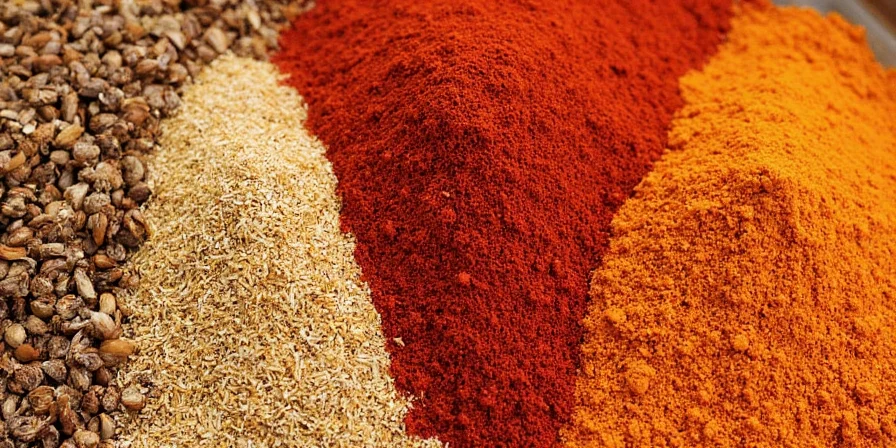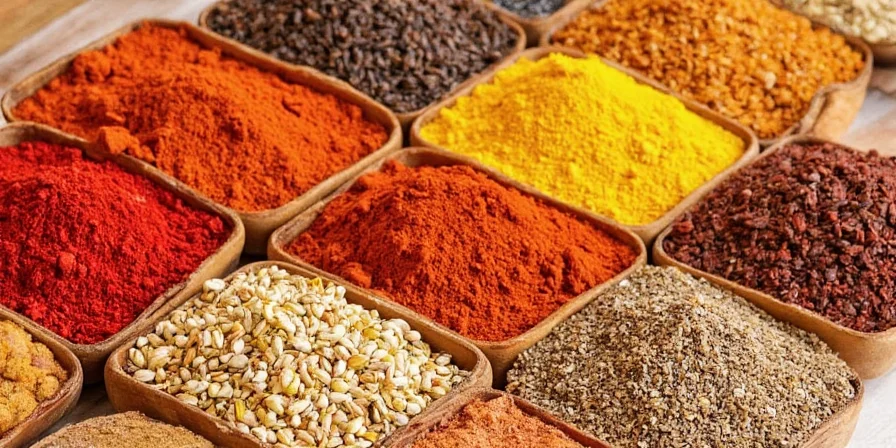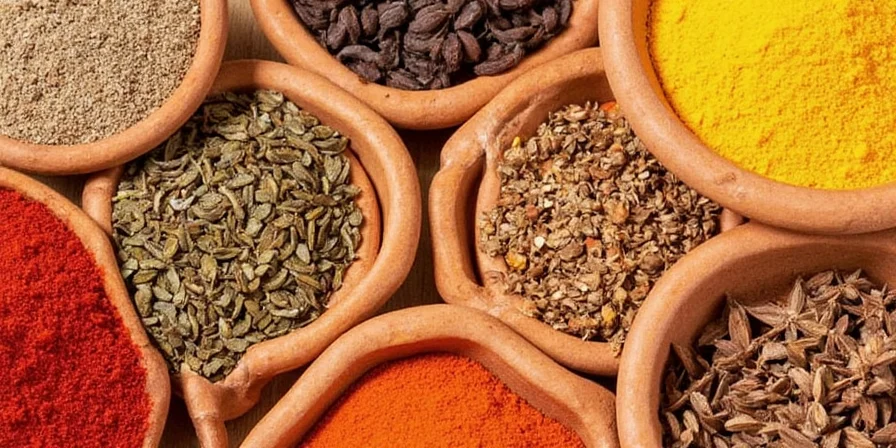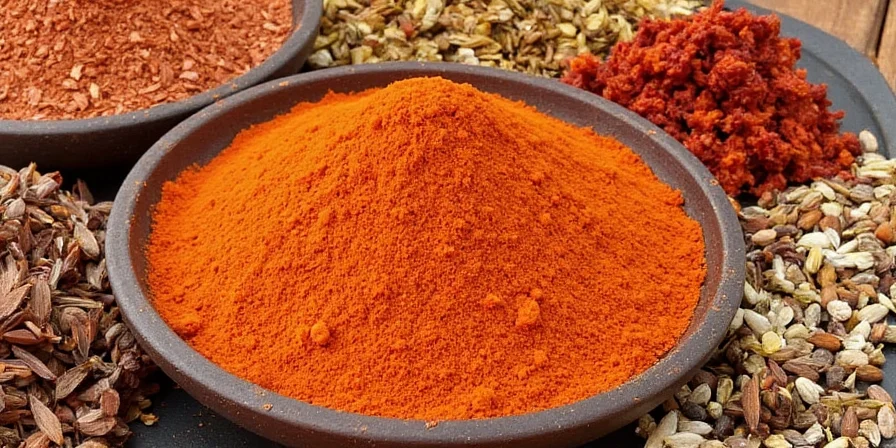Spice Chronicles: The Top 10 Classic Asian Spices That’ll Make Your Taste Buds Dance!
When it comes to bold flavors, vibrant aromas, and centuries-old culinary traditions, few regions can match the richness of Classic Asian spices. From the bustling markets of Bangkok to the serene spice gardens of Kerala, Asia has been a treasure trove for flavor explorers. In this article, we dive deep into the most iconic spices that have defined Asian cuisine for generations—and how you can use them like a pro in your own kitchen.
Table of Contents
- Introduction
- Top 10 Classic Asian Spices
- Pro Tips & Tricks
- Cultural Significance
- How to Use These Spices Like a Local Chef
- Conclusion
Introduction
Asia isn’t just one place—it’s a continent of contrasts, cultures, and cuisines. But what ties together so many dishes from East, South, and Southeast Asia? The answer is simple: SPICES. Whether it's the smoky warmth of Sichuan pepper or the floral punch of star anise, each spice tells a story of trade, tradition, and taste.
In this blog, we'll explore some of the most iconic classic Asian spices—what they are, where they come from, and how you can incorporate them into your cooking with confidence (and maybe a little flair).

Top 10 Classic Asian Spices You Should Know
Here’s our list of must-have spices from across Asia that every home chef should have in their pantry. Each one brings something unique to the table—from flavor profiles to historical significance.
- Turmeric – The golden spice of India, known for its earthy flavor and anti-inflammatory properties.
- Star Anise – A sweet, licorice-like spice commonly used in Chinese soups and pho broths.
- Sichuan Pepper – Not technically a pepper, but a citrusy numbing sensation loved in Sichuan cuisine.
- Cardamom – Often called the “queen of spices,” it adds a floral note to both savory and sweet dishes.
- Cumin – A staple in Indian and Middle Eastern curries, offering warm, nutty depth.
- Fenugreek – Has a bitter edge that mellows beautifully when cooked, often found in curry powders.
- Ginger – Fresh or dried, it adds heat and brightness to countless dishes.
- Cinnamon – Especially Ceylon cinnamon from Sri Lanka, which is sweeter and more delicate than Cassia.
- Nutmeg & Mace – Used widely in Indonesian and Indian cooking, especially during festive seasons.
- Shallot Powder – Adds a rich, oniony background without the bite of raw onions.

Pro Tips & Tricks for Using Classic Asian Spices
Using spices isn’t just about throwing them into a pot and hoping for the best. Here are some tried-and-true tips to make the most of your spice rack:
- Toasting spices first enhances their aroma. Try dry roasting cumin seeds or coriander before grinding them.
- Store them correctly—keep whole spices in airtight containers away from light and heat.
- Use fresh ground spices for stronger flavor, especially with cardamom and nutmeg.
- Bloom spices in oil to unlock complex flavors, particularly in Indian and Thai dishes.
- Pair wisely: Some spices harmonize better than others. For example, ginger and garlic go hand-in-hand in stir-fries.

Cultural Significance Behind These Spices
Many of these spices have deep cultural roots. For example:
- Turmeric is not only used in food but also in religious ceremonies and beauty rituals in India.
- Star Anise symbolizes luck and prosperity in Chinese culture and is often included in celebratory dishes.
- Sichuan Pepper became popular during the Tang Dynasty and is still a cornerstone of Sichuanese cuisine today.
| Spice | Country of Origin | Main Flavor Notes | Cultural Role |
|---|---|---|---|
| Turmeric | India | Earthy, bitter, slightly peppery | Hindu rituals, traditional medicine |
| Star Anise | China | Sweet, licorice-like | Luck, prosperity, winter dishes |
| Sichuan Pepper | China | Citrusy, numbing | Signature in Sichuan cuisine |
| Cardamom | India | Floral, herbal | Used in chai, desserts, and festivals |

How to Use These Spices Like a Local Chef
Want to level up your Asian cooking game? Here are some authentic ways to use these spices:
- Turmeric → Add to lentil soups, rice dishes, or smoothies for a health boost.
- Star Anise → Use in slow-cooked beef dishes or Vietnamese pho broth.
- Sichuan Pepper → Grind and mix with salt for a dipping sauce or sprinkle over mapo tofu.
- Cardamom → Crush and add to biryanis or chai tea.
- Cumin → Toast with mustard seeds for a classic South Indian tempering (tadka).
- Fenugreek → Mix with yogurt for marinating meats or sprinkle in pickles.
- Ginger → Infuse into oil or blend with garlic for a base paste.
- Cinnamon → Simmer with cardamom and cloves for mulled drinks or stews.
- Nutmeg → Grate into béchamel sauces or Dutch-Indonesian rijsttafel dishes.
- Shallot Powder → Sprinkle over fried rice or noodles for a quick umami boost.

Conclusion
Classic Asian spices are more than just ingredients—they’re a passport to a world of flavor, history, and culture. Whether you're simmering a comforting bowl of pho, whipping up a fragrant curry, or trying your hand at homemade garam masala, understanding these spices opens doors to culinary adventures right from your kitchen.
So next time you’re at the spice aisle—or exploring a bustling market in Asia—take a moment to appreciate the stories behind each jar. After all, great cooking starts with great spices. Now go season your life with a pinch of magic!











 浙公网安备
33010002000092号
浙公网安备
33010002000092号 浙B2-20120091-4
浙B2-20120091-4